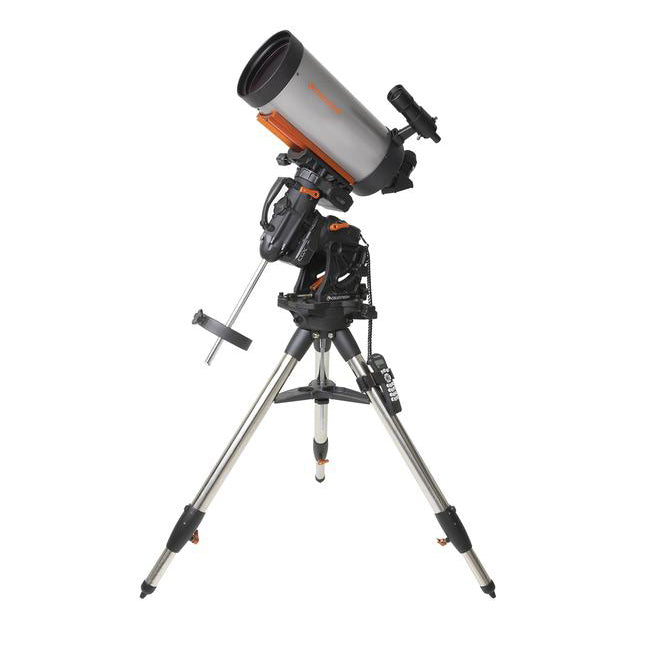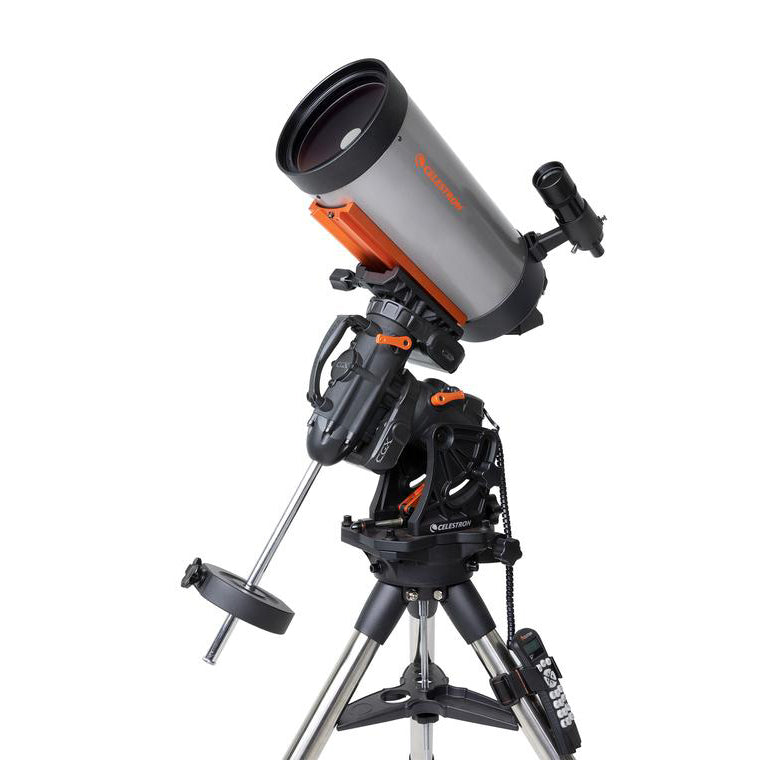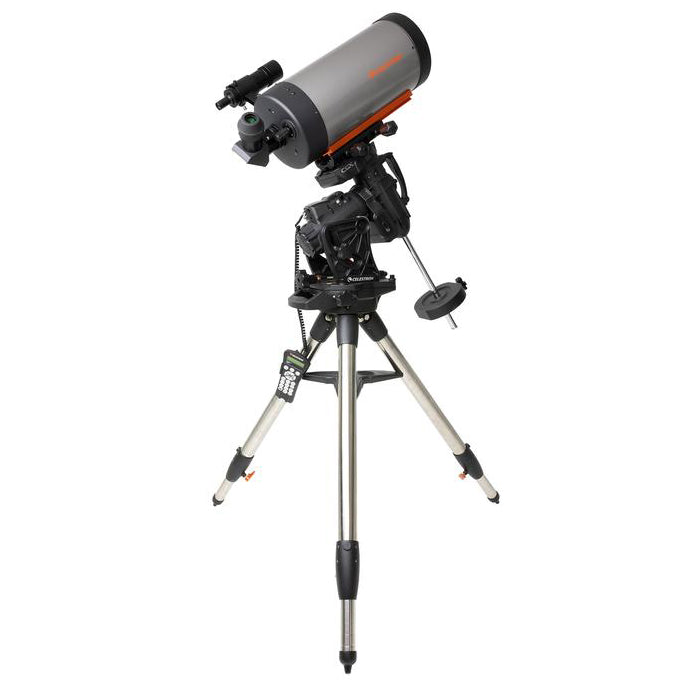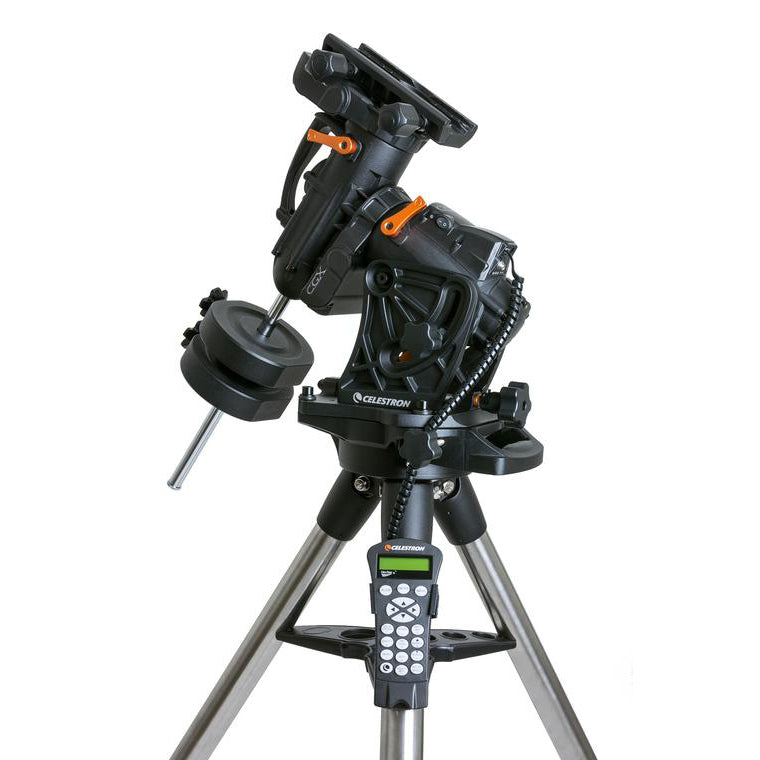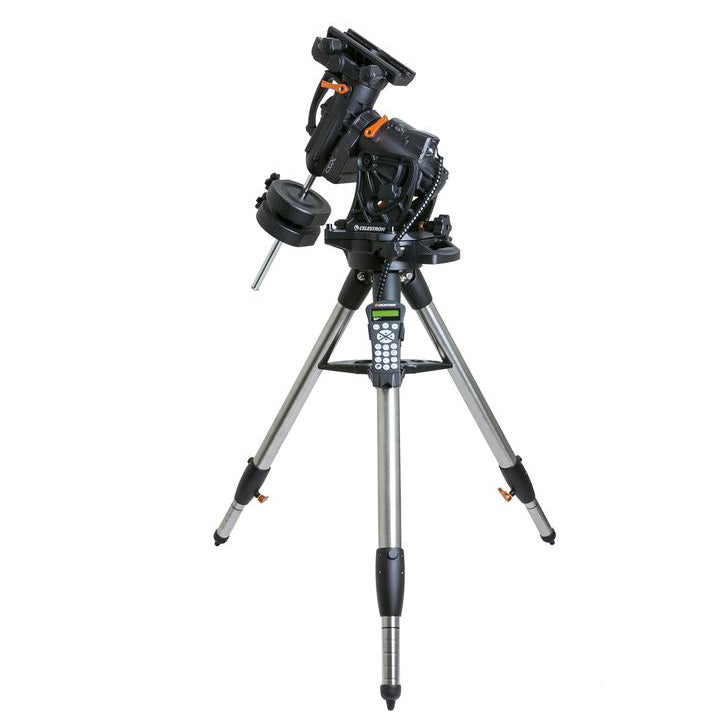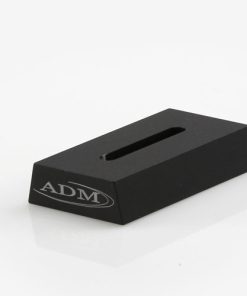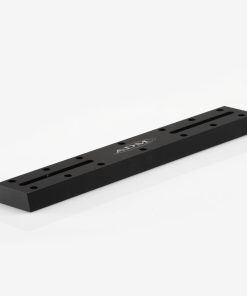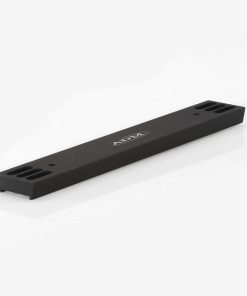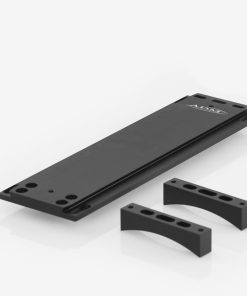Celestron CGX 700 Maksutov-Cassegrain Telescope – 12049 Celestron
$ 3.499,00 $ 874,75
Celestron CGX 700 Maksutov-Cassegrain Telescope
The Celestron CGX 700 is a Maksutov-Cassegrain Telescope that reveals highly detailed views of planets and other small celestial objects with superb contrast. Coupled with the sturdy equatorial mount and tripod, this Mak-Cass optical tube provides exceptionally magnified views of the Moon’s landscape, including craters and maria. As far as deep sky objects are concerned, the Maksutov design is optimally suited for viewing fainter targets such as globular clusters and planetary nebulae.
You will be wowed by the CGX 700 Mak-Cass’s ability to emphasize more celestial object contrast, especially when observing from urban environments with higher amounts of light pollution. Additionally, all components including the optical tube, mount head, tripod, counterweight, and counterweight bar, easily break down into separate parts that are a lot more manageable for transporting to and from dark sky viewing sites.
Maksutov-Cassegrain Optical Design
Maks are catadioptric telescopes. This means that the optical design includes both a lens and a mirror. The light coming through a Mak passes through the corrector lens to the primary mirror and back to a spherical secondary mirror before it hits your eyepiece. Images are bright, sharp, and virtually free of chromatic aberration.
This optical design provides users with many exceptional features. The Mak has a “secondary spot” of reflective coating applied directly to the interior of the corrector plate in lieu of a secondary mirror. The eliminated the need for frequent collimation as is the case with Schmidt-Cassegrains. In addition, the secondary spot is considerably smaller compared to a conventional Schmidt-Cassegrain secondary mirror, enabling the superior contrast views the Mak is known to offer.
An important aspect to note regarding Maksutov-Cassegrain telescopes is that their larger, heavier corrector plates don’t cool down and adjust to ambient air temperature as quickly as Schmidt-Cassegrains that have the same aperture.
CGX Mount & Tripod
The CGX represents the culmination of equatorial mount design experience acquired over decades by Celestron engineers, as well as input from imagers all around the globe. This CGX computerized equatorial mount and 7″ Mak OTA combination is a cutting-edge deep-sky astronomical imaging system.
The CGX is an incredibly sturdy equatorial mount which rigidly supports the 700 Mak. The mount was designed more compactly, so the instrument load is held closer to the R.A. axis, thus reducing torque from the load. It was also designed using FEA (Finite Element Analysis) software, which helped to optimize the stout structure of the mount. As a result, the CGX can support more weight than other mounts with similar mass. With its 55 lb. load capacity, it can easily handle the 700 Mak, which weighs only 17 lbs., along with a camera and any accessories. Expect a vibration-free setup, even in somewhat windy conditions. The 700 Mak connects directly to the CGX with its CGE dovetail mounting bar.
The heavy-duty adjustable height tripod has 2” diameter steel tripod legs with an extra-wide stance for improved stability. Graduated markings on the tripod legs make it easy to extend them to the same height and level the tripod.
Packed with functionality and conveniences that make imaging with the 7″ Mak easy, this fully computerized mount will automatically “GoTo” any of the 40,000+ astronomical objects selected from the NexStar+ hand controller’s database and automatically track the object as it appears to move across the night sky.
Designed with imaging in mind, the CGX motor drive system builds upon knowledge from previous generations of mounts. You can trust CGX to accurately track during an exposure. At the heart of the system are low cog DC servo motors with integrated optical encoders. The low cog design helps the motors run smoothly, while the integrated optical encoders provide accuracy. The motors connect to the worm gears with a belt-and-pulley system (instead of spur gears) to reduce gear backlash when the motor changes directions. The steel worm gears are supported by precision bearings and spring-loaded against a brass worm wheel, which also helps ensure a smoothly operating drive system with minimal backlash and no binding.
To track objects in the night sky, the mount must first be polar-aligned. Celestron makes this process easier than ever with the innovative All-Star Polar Alignment procedure. No extra equipment, such as a polar finder scope, is required. Best of all, the alignment can usually be completed in about 15 minutes, even without a clear view of Polaris.
All mounts have some amount of “periodic tracking error” inherent in them caused by tiny gear imperfections. To mitigate this, the CGX has Permanent Periodic Error Correction (PPEC). This allows you to run a routine to record the periodic errors only once; the recording is kept in memory, and subsequently corrects for the mount’s periodic tracking error. If an even higher level of tracking accuracy is desired, the CGX also has a dedicated autoguider port to connect an autoguiding camera directly to the mount to correct for any residual tracking errors.
Conditions for imaging are best when celestial objects are at their highest point in the sky with the darkest background, called the meridian. But some German equatorial mounts have trouble tracking near the meridian because they need to perform a “meridian flip,” readjusting their position to avoid the tube striking the mount. CGX does not suffer from this problem, imaging through the meridian with ease and not requiring a meridian flip until the object is a full 20° past the meridian.
The NexStar+ also has dozens of other functions to control every aspect of the mount’s behavior. These include:
- Multiple options for aligning the mount with the night sky
- Adjustable slew rates up to 5° per second
- Compatible with both the Northern and Southern hemispheres
- Adjustable autoguiding rates
- Hibernate mode allows the mount to be powered down without losing alignment
- Firmware updates and new features added regularly
In addition to the autoguider port, the CGX also has other ports to enhance and expand the capabilities of the mount. The hand controller has a USB 2.0 port for those who wish to control the mount with an external computer and optional third-party software. There are also 2 AUX ports on the mount that can support optional accessories such as StarSense AutoAlign.
Transporting the entire system to a dark site is extremely manageable, even for one person. The optical tube, mount head, tripod, counterweight bar, and counterweight all disassemble into separate pieces. The only tool ever required is a supplied hex key, which has a holder built into the mount, so you can’t lose or forget it. CGX also features two ergonomic carry handles that make carrying and setting up this heavy-duty mount much more comfortable. When it’s time to transport your mount, the tripod accessory tray “nests” into the legs when collapsed, stabilizing the tripod in your vehicle and ensuring that you don’t lose the tray.
Ready for Remote Imaging
Today’s imagers do not necessarily want to be near their telescope outside when they are capturing images. Rather, they would prefer to be indoors controlling the mount and camera with a computer, while the telescope is in the backyard, or even hundreds of miles away in a dark remote observing site. Not every mount is capable of remote observing operation, but the CGX was designed specifically with this in mind. Celestron’s engineers thought through every scenario that might occur in the field, since it’s very likely that no one will be around to immediately “rescue” a remote telescope if something unexpected occurs.
One of the most critical problems that can occur during remote operation is the optical tube inadvertently striking the mount. This will not only ruin an exposure and require realignment with the sky, but could also damage expensive equipment. This type of strike cannot happen with CGX because optical switches on each axis stop the motors before the astrograph can run into the mount, without loss of alignment.
Should power be somehow interrupted, the mount has “home position” optical switches that allow easy remote realignment. The mount’s cables are all wired internally through the mount, and all external inputs, including the power jack, are on a stationary section of the mount. This prevents cables from becoming snagged or tangled and unplugged as the astrograph is moving. The mount also has hard stops to physically limit the motion of the astrograph on each axis, preventing the internal cabling from being overly twisted or pulled and potentially failing. In addition, the hard stops provide a “fail-safe” safety measure to protect the astrograph should the limit switches somehow fail. The power jack for the mount utilizes a threaded barrel connector, ensuring the power cable won’t become unplugged and cause the mount to lose power.
For remote imaging, the mount needs a way to be controlled by an external computer. The CGX has two ways to connect to a computer via USB 2.0. First, it has a USB port on the mount itself which is used exclusively to connect to a PC running the included Celestron PWI telescope control software. Developed in partnership with PlaneWave Instruments, the software has an intuitive graphical user interface and provides an excellent solution for remotely operating the mount. It incorporates multi-point mount modeling to provide the most accurate alignment of the mount to the sky possible. Furthermore, the included NexStar+ hand controller also has its own USB 2.0 port for computer connection; this can be used with optional third-party telescope control software by use of an ASCOM driver.
StarBright XLT Technology
StarBright XLT is Celestron’s revolutionary optical coating system that outperforms any other coating in the commercial telescope market. There are three major components that make up our StarBright XLT high transmission optical system design:
- Unique enhanced multi-layer mirror coatings made from precise layers of aluminum, SiO2 (quartz), TiO2 (titanium dioxide), and SiO2 (silicon dioxide). Reflectivity is fairly flat across the spectrum, optimizing it for both imaging and visual observing.
- Multi-layer anti-reflective coatings made from precise layers of MgF2 (magnesium fluoride) and HfO2 (hafnium dioxide). Hafnium – a rare element that costs nearly $2,000 per kilogram – gives us a wider bandpass than the titanium used in competing coatings.
- High-transmission water white glass is used instead of soda lime glass for the corrector lens. Water white glass transmits about 90.5% without anti-reflective coatings; that’s 3.5% better transmission than uncoated soda lime glass. When water white glass is used in conjunction with StarBright XLT’s anti-reflective coatings, the average transmission reaches 97.4%, an 8% improvement.
Celestron’s Starry Night Special Edition Software
Starry Night is a planetarium software package which provides easy-to-understand explanations and impressive visuals of all kinds of night sky phenomena. Use Starry Night to learn more about extrasolar planets imagery, 3D Stars rendering, observation planning, telescope control, multiple-panel printing, and much more. Starry Night is available on macOS and Microsoft Windows.
Included Accessories
This Celestron CGX 700 Mak package includes a 2″ visual back, 2″ star diagonal with 1.25″ adapter, 28 mm wide-field 2″ eyepiece, and an 8×50 straight-thru finderscope. The optical tube also accepts other 2″ accessories such as 2″ Barlow lenses or 2″ eyepieces and filter combinations.
Quick Shipping and Professional Packaging
Due to our longstanding partnership with UPS FedEx DHL as well as other major international carriers, we are able to provide various shipping options. Our warehouse personnel are well trained and will be able to pack your goods in accordance with the exact and precise specifications. Your goods are thoroughly checked and securely secured prior to shipment. Everyday we deliver hundreds of packages to our customers from all over the world. Our determination to be the biggest online retailer in the world is shown by this. The warehouses are located situated in Europe in the same way as they are in the USA.
Note: Orders containing multiple items will have a separate processing period for each item.
We will carefully examine all products before they are shipped. Today, the majority of orders will be delivered within 48 hours. The delivery time will be between 3-7 working days.
Returns
We don't manage the stock at our warehouse and factory. The actual inventory may fluctuate at any time. It's possible that you may not receive your order once it's been placed.
Our policy is for 30 days. We are unable to return or exchange your purchase after 30 days since the purchase.
In order for your item to be eligible for return the item must not be opened and in the condition you received it. It must also remain in the original packaging.
Related products
Telescope Accessories
ADM Accessories CGEM Knob Upgrade – Two Orange Anodized Rosette Saddle Knobs – CGEM-SAD-OR ADM
Telescope Accessories
ADM Accessories Vixen Style Universal Dovetail Telescope Mounting Bar – 3″ Long – VDUP3 ADM
Telescope Accessories
ADM Accessories Tripod Knob Set for Losmandy G11 & Celestron CI700 Mounts – Orange – TKS-OR ADM
Telescope Accessories
Astrozap Aluminum Dew Shield for Celestron 14″ EdgeHD SCT – AZ247 Astrozap
Telescope Accessories
Telescope Accessories
ADM Accessories Vixen Style Universal Dovetail Telescope Mounting Bar – 11″ Long – VDUP11 ADM
Telescope Accessories
ADM V Series Universal Dovetail with 125 mm Rings – VDUPR-125 ADM
Telescope Accessories
ADM Accessories Vixen Style Dovetail for Meade 8″ SCT – VM8 ADM
Telescope Accessories
ADM Accessories Vixen Style Dovetail for Meade 10″ SCT – VM10 ADM
Telescope Accessories
ADM Replacement Azimuth Knobs for Celestron Advanced VX Mount – VX-AZ ADM
Telescope Accessories
Astrozap Aluminum Dew Shield for Celestron 11″ SCT – Texture Black – AZ213-TB Astrozap
Telescope Accessories
Astrozap Aluminum Dew Shield for Celestron 8″ EdgeHD SCT with Top & Bottom Notches – AZ245 Astrozap
Telescope Accessories
ADM Mini Electronics Pier Knobs for Celestron CGE Pro Mount – CGE-PRO-MP ADM
Telescope Accessories
Telescope Accessories
ADM Tripod Knob Set for Celestron CGE Pro Mount – CGE-PRO-TKS ADM
Telescope Accessories
ADM Accessories CGEM Knob Upgrade – Two Orange Anodized Spreader Bar Knobs – CGEM-SB-OR ADM
Telescope Accessories
Telescope Accessories
ADM Accessories Vixen Style Universal Dovetail Telescope Mounting Bar – 14″ Long – VDUP14 ADM
Telescope Accessories
AstroZap 10″ Dobsonian Telescope Light Shield – AZ1202 Astrozap
Telescope Accessories
ADM V Series Dovetail Bar for Newer Celestron 6″ SCT – VC6 ADM
Telescope Accessories
ADM Accessories Vixen Style Dovetail for Celestron 11″ SCT – VC11 ADM
Telescope Accessories
Astrozap Aluminum Dew Shield for Celestron 8″ SCT – Texture Black – AZ208-TB Astrozap
Telescope Accessories
ADM V Series Universal Dovetail with 150 mm Rings – VDUPR-150 ADM
Telescope Accessories
ADM V Series Dovetail Bar for Celestron 8″ SCT – Extra Long – VC8-XL ADM
Telescope Accessories
ADM Replacement Spreader Bar Knobs for Celestron Advanced VX Mount – VX-SB ADM
Telescope Accessories
Telescope Accessories
Telescope Accessories
ADM Tripod Knob Set for Celestron CGEM DX Mount – CGEM-DX-TKS ADM
